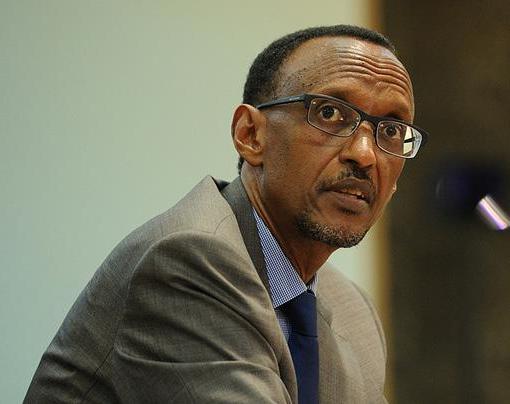
9 minute read
Quotes
President Paul Kagame “Working together, being able to identify what we can do to support each other is what can benefit Africa as a whole. The more we bring resources together, the more we work together, the more each Partner States benefits. We want every citizen to benefit and make sure that whatever they do earns them enough to change their lives.” East African
Advertisement
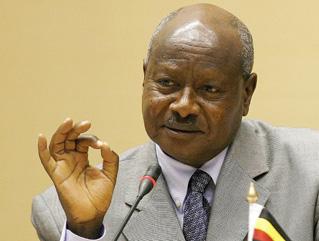
President Yoweri Kaguta “The weigh-bridges were reduced to one in each country; Kenya at Mariakani, Uganda, at Malaba/Busia and Rwanda at Katuna. Multiple bonds have been reduced to one. Payment of a single bond has made a saving for Uganda and Rwanda of US$ 45 million per year.”
3rd meeting of the 3rd Session of the East African Legislative Assembly (EALA) held on 21 January 2014.
President Uhuru Kenyatta “Let us be frank with each other; we have not been able to move fast because of national fears, a sense of insecurity that if one opens up their people will be denied jobs and other opportunities. We must deal with these fears. We need to start talking about our people being the East African people. Kenya and Rwanda have made progress on this. We have been clear on opening up our labor market to take full advantage of the labor that is available in the east African region”. East African
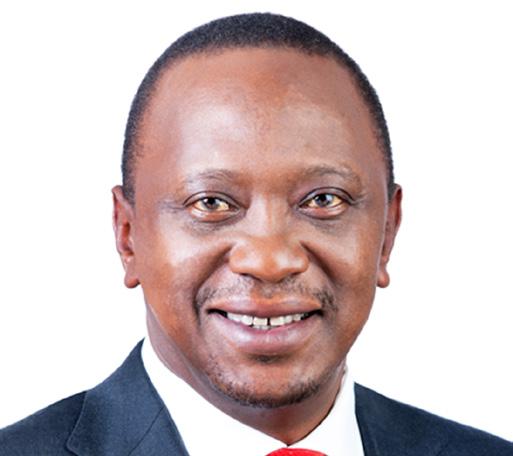
EALA Speaker Rt. Hon. Daniel Fred Kidega “I have no doubt we shall deliver. I will pick up from where my predecessors left and continue to promote the good ideals of our mandate of widening and deepening the integration process. In doing so, I will give the majority their way but respect and protect the rights of the minorities at all times.” Swearing in ceremony as EALA Speaker on 19
December 2014.
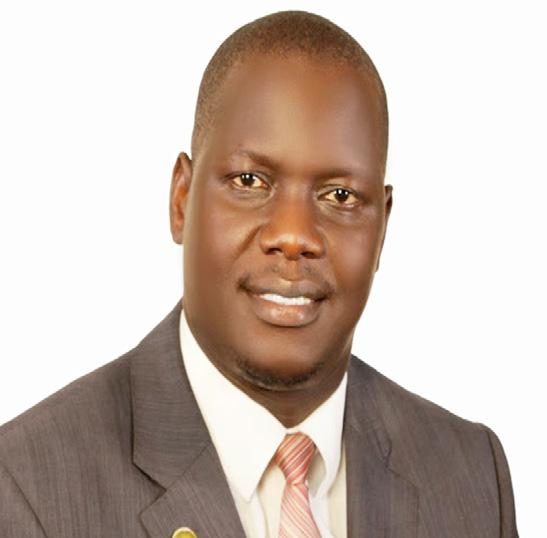
Cover Story SGR to reduce Kigali-Mombasa transport costs
Rwandan importers and exporters may pay less on transportation of goods between Kigali and Mombasa in Kenya once the planned Standard Gauge Railway (SGR) linking the two destinations is complete in March 2018.
With reduced cost of transport between Mombasa and Kigali, Rwanda will benefit from increased exports through the northern corridor and this will improve the country’s competitiveness in international trade.
The reduction in transport costs will further enhance private sector productivity and profitability and benefit consumers in terms of reduced prices on imported goods and increase government revenues through increased trade volumes.
The SGR project launched on August 8, 2014 in Kampala by Presidents Yoweri Museveni of Uganda, Paul Kagame of Rwanda and Salva Kiir of South Sudan will stretch from Mombasa in Kenya through Nairobi to Kampala, Kigali and Juba, the capital city of South Sudan, the world’s youngest country. Experts are convinced that the new mega infrastructure project will lower the cost of transportation of goods from the Kenyan port of Mombasa to Kigali by at least half of the current cost estimated at USD4,200 per each 40ft container.
John Bosco Kalisa, Programs Manager at the Rwanda Country Office of TradeMark EastAfrica, a multi-donor funded organisation that supports the East African Community (EAC) integration says that the railway project has huge benefits to the region.
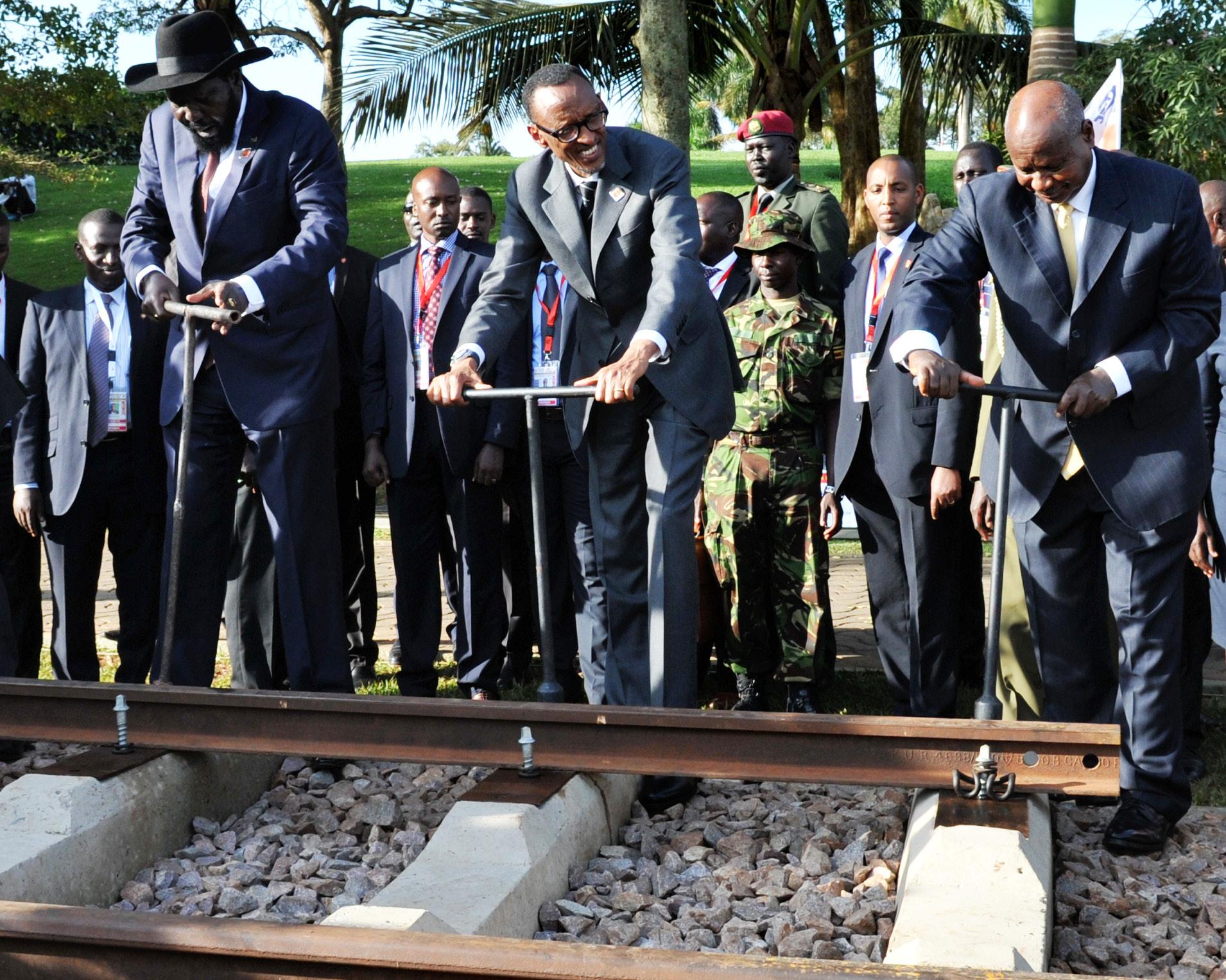
“Statistically, when goods are moved by rail, they are cheaper than using the road network. So it is a very good initiative [Standard Gauge Railway likely to cut down the transport costs by 50 percent,” says Kalisa.
Currently, traders not only incur high transport charges but their goods also delay in transit between Mombasa and Kigali thus contributing to high cost of doing business in the region.
With the railway, it is also hoped that goods will leave Mombasa and reach Kigali almost in two days. This will be a huge improvement since it currently takes an average of two weeks to have goods leaving the port of Mombasa to reach Kigali. Eng. Jules Ndenga, the in-charge of the railway project in the Ministry of Infrastructure (MININFRA) says that the train on the SGR will move at a speed of 80 kilometres per hour. Using the train, traders will no longer have to battle numerous road blocks, weigh bridges and other non-tariff barriers (NTBs) that have become the usual hindrances to movement of goods within the region.
The train, according to Kalisa, will also be built with modern tracking systems which will enable traders to monitor the progress of their cargo on the train and predict when it is likely to arrive at the intended
L-R: Presidents Salva Kiir, Paul Kagame and Yoweri Museveni Lauching the Ugandan section of the standard gauge railway in August 2014
destination.
Experts say that this will be some sort of permanent solution to the cargo theft which has in the recent past targeted Rwandan minerals transiting through the port of Dar es Salaam in Tanzania. Minerals Supply Africa (MSA), a Kigali based minerals exporter is one of the victims of mineral theft at the port of Dar es Salaam.
The East African Newspaper reported that the company had minerals worth Rwf542million stolen at the Tanzanian port. The alleged thieves offloaded the minerals and loaded the container with cement.
The Newspaper also reported that Rwandan mineral companies had previously lost about Rwf11billion worth of minerals at the port of Dar es Salaam.
Deputy Chief Executive Officer at MSA, Fabrice Kayihura says that the company as well as other mineral exporting companies in Kigali face two challenges at the port of Dar es Salaam, including; security problems, especially for high-value cargo such as minerals; and long transit time for the cargo including transport up to the port and the delays faced while waiting to be loaded on the vessel.
He confirms that the company’s mineral exports have once been stolen in transit and no responsibility could be established either by the security services or by the Dar es Salaam Port Authorities to point out the real origin of the theft. He says that the long transit time has partly been caused by the security problems but also normal congestion that happens due to workload and availability of vessels at the port, plus the increase of volumes handled by the port when berthing capacity is limited.
In turn, the company is affected as these shortcomings “lead to serious cash flow problems which highly jeopardise the running of the company.”
“The cost of transport has significantly increased because of the transporters reinforced security measures and unnecessary delays occur as a result,” Kayihura noted in emailed answers to the questions raised by Integration Affairs Magazine.
MSA hopes that the railway line linking Kigali with the port of Mombasa in Kenya will be a solution to the security and mineral theft problem. This means that once the railway line is fully functional, it could be an alternative option for MSA and other Rwandan mineral exporters, thus leaving the less secure Dar port. “The railway line will probably reduce the transport cost but will be of real benefit for the users in general and the minerals exporters particularly only if the transport/transit delay of the goods is brought to a minimum, reliable security measures put in place all along the railway line to the port, and a tracking system for the cargo is available during the transit time. The cargo needs to be fully under control till intended destination,” Kayihura wrote in the emailed statement.
Mixed cargo, passenger train in the offing
Eng. Jules Ndenga says that the train will have both cargo and passenger wagons which will make it a mixed use train. “The objective is to make it a mixture of cargo and passenger. This is the advantage with trains; you can carry anything,” Eng. Ndenga said during an interview at the Ministry. ” He said the number of passengers or cargo weight that the train can carry does not matter a lot but what matters is the number of wagons that the train has for each type of traffic. Be it for cargo or passengers.
Eng. Ndenga said that demand also plays a big role since the aim is to ease transport by reducing the cost and transit time from Kigali to Kampala and then Mombasa in Kenya. Wagons, he said, can be added or removed depending on the available demand.
On the issue of demand, Kalisa said that there is huge demand and this is demonstrated by the growth of intra-EAC trade, which means July-Dec 2014
that the five partner states of EACRwanda, Kenya, Tanzania, Burundi and Uganda-are trading amongst themselves. For instance, Kalisa said that intra-EAC trade has doubled from USD2.1billion when the partner states committed to a customs union to around USD5.3 billion.
Kalisa also says that the volume of goods passing via the port of Mombasa is currently more than what the port can handle, which is another indication that the railway line will have demand once it starts operating.
“I have no doubt about the traffic,” Kalisa said, referring to the traffic between Mombasa, Kampala and Kigali. “I’m seeing a lot of potential within the region. I’m very positive and optimistic in terms of how the region is growing in terms of trade and investment. Whoever invests in the rail project should be assured of a positive return on investment,” Mr Kalisa further noted. Mombasa-Kigali Transport costs are set to ease on arrival of SGR.
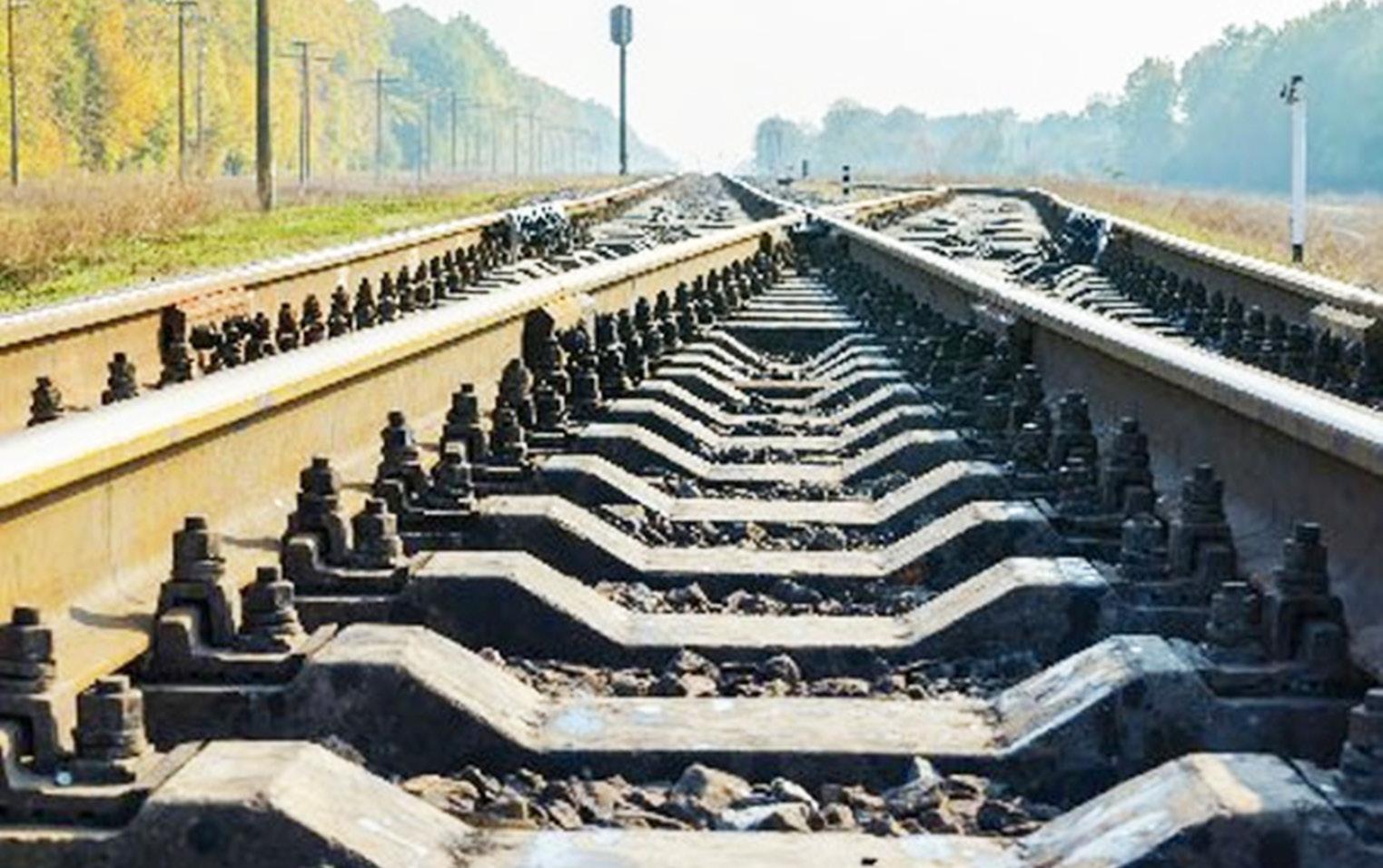
Progress made on the railway project
The SGR project has been divided into six sections. The first and second sections are on the Kenyan soil. They include MombasaNairobi and Nairobi-Malaba.
The third, fourth and fifth sections are on the Ugandan soil and they include Malaba-Kampala, Kampala-Kasese and BihangaMirama Hill section.
The rail link to Kigali will start from Mirama Hill. The Kenyan government commissioned the Mombasa-Nairobi rail section in 2013 while Uganda also commissioned part of its section on August 8, 2014.
At the same time, on June 23, 2014, Uganda and Rwanda hired consultants to conduct preliminary design studies of their shared section.
The consultants, a consortium of German engineering firm, Gauf Engineure and IRS from Australia, were expected to provide their report in December 2014. This report will further be used by the governments of Uganda and Rwanda to source for financing for the project and then hire a construction firm to build the railway.
Basing on the cost of building the railway link between Mombasa and Nairobi for 500km which is estimated at USD 2.6 billion, it is estimated that the entire project--Mombasa-Kampala-Kigali railway will cost USD13.5 billion to complete all the 2,005km. However, the rail section emerging from Mirama Hill in Uganda to Kigali which is 200km is estimated to cost USD1.3billion while Rwanda’s estimated contribution to the project will be USD1.5billion.
Eng. Ndenga says that the rail link to Rwanda will enter via Kagitumba in the Eastern Province. The unconfirmed routes so far, he said, include some parts from Bihanga which is between Mbarara and Kampala and Kasese and Mbarara all in Uganda.
“There are sections where we are not yet clear whether the railway will pass through them,” Eng. Ndenga said, adding that the Rwanda-Uganda section will have a width of 30 meters because of limited land while Kenya has made the railway corridor 60 meters because of availability of land.
There are plans to fence the railway corridor so as to keep the rail secure from vandalism.










